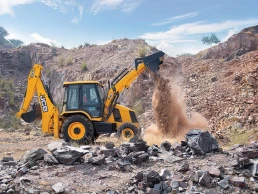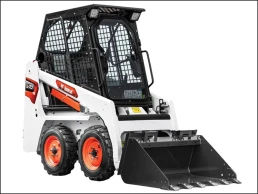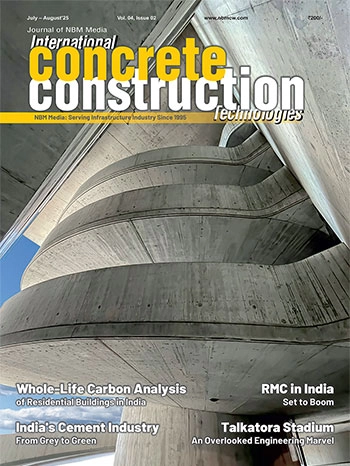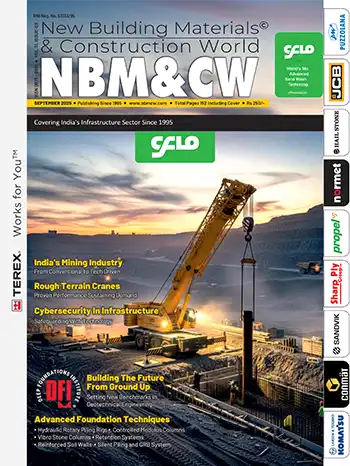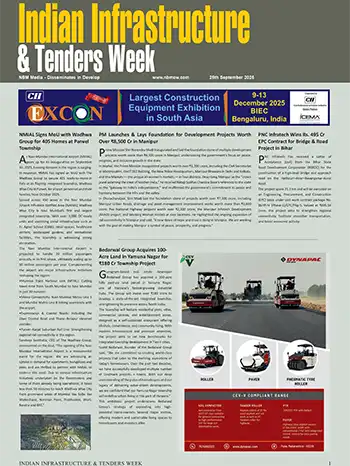Prensoland Modern Precast Floors Appearance of the iHCS
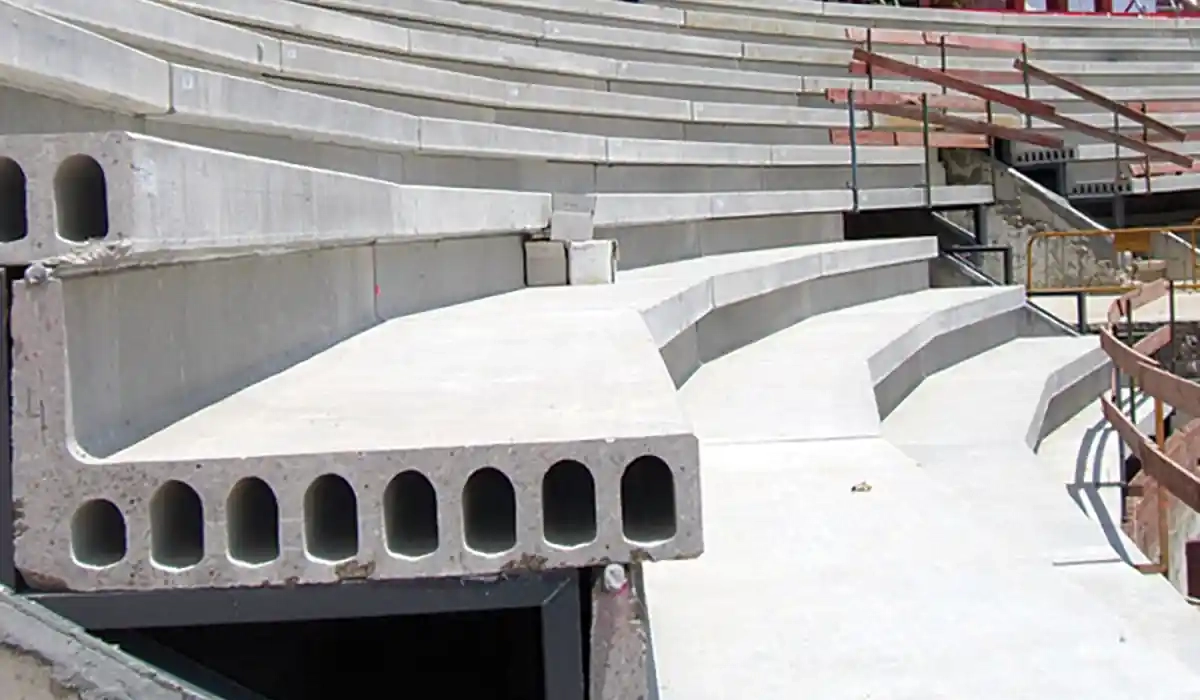
The elements available on a floor to refrain the relative movement along their span are:
- perimetral reinforcement of the floor
- shear mobilized at the longitudinal joint between adjacent hollow core slabs
- compression layer of concrete with screeding to work in composite action with the hollow slabs
- ties with the supporting horizontal members.
The concept is to embed structural performances on the precast concrete components. As a consequence of this driving approach, the structures can be leaner, and their masses reduced. The evolution to modern precast has resulted in:
- Improving the contribution of each kilo of cement and each kilo of steel to the structural demand in a building.
- Optimising the design and production of the hollow core slabs used on floors, so that they are not banalized pretending that what matters only is the fact that their weight is less than a solid cast in-situ slab.
 Figure 1: Different cord of stress for HCS and iHCS
Figure 1: Different cord of stress for HCS and iHCSFactors influencing the shear between concretes cast at different times are:
- cohesion of the concrete
- eventual presence of forces normal to their interface surface
- dowel action in case there is steel reinforcement protruding from one of the concretes and inserted in the other.
The highest shear capacity is obtained with concrete when the interface concrete surface adopts a shear-keyed geometry. This applies to any precast element on molds such as column pockets, walls, and even beams.
Nowadays, the hollow core slabs can be side indented as well, provided a plastic concrete mix design is used in their pre-stressed continuous casting process.
 Figure 2: Hollow core slab with shear keyed efficient side surface
Figure 2: Hollow core slab with shear keyed efficient side surfaceThe benefits brought by side indenting on the pre-stressed concrete hollow core slabs are:
- there is a transmission of additional shear at the longitudinal joint without increasing the production cost.
- in seismic zones, the shear key constitutes a lateral collapse mechanism with large inelastic energy absorption capacity.
In a) it is observed that the resulting surfaces after the collapse of the shear key mobilize as much shear as a just installed at site smooth side hollow core slab.
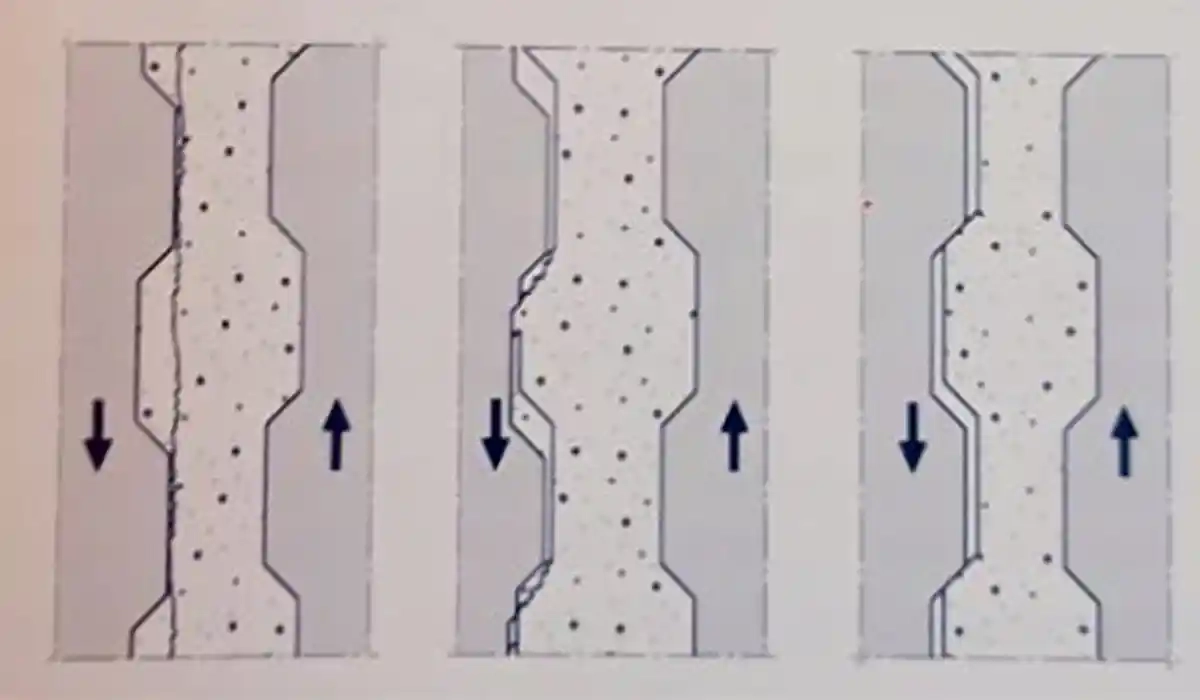 a), b) & c) Figure 3: Collapse forms of a shear key
a), b) & c) Figure 3: Collapse forms of a shear keyThere is an equivalence between the additional shear brought by the side indenting on the hollow core slabs and the thickness of the compression layer laid on top of them. In fact, when the sides are shear-keyed, the thickness of the compression can be reduced or this one just removed. Should the removal of the compression layer lead to insufficient bending moment or shear capacity, the thickness of the hollow core slabs can be increased, which would always be beneficial compared to laying a solid topping.
Compression layer: The friction brought by the topping on a hollow core slab follows the equation:
V = bw * d * fv
Where:
bw is the width of the interface
d is the thickness of the compression layer, and
fv is the shear stress given the concrete quality.
The top surfaces of the slabs are often roughened to ensure the bonding with the concrete topping, else the composite action is not verified; hence, the moment of inertia and the resisting moment are affected.
Ties with the horizontal supporting members:
Using a plastic mix design, the pre-stressed concrete hollow core slabs can be produced with the strands protruding a predetermined length from their ends. These tracks of strands function in dowel action refraining the tensile stress across the longitudinal joint between adjacent slabs, as represented in Fig. 3 c) where the concrete at the joint is riding on the shear key and therefore this mechanism is not developing its full capacity.
 Figure 4: Hollow core slabs produced with exposed strands at both ends
Figure 4: Hollow core slabs produced with exposed strands at both ends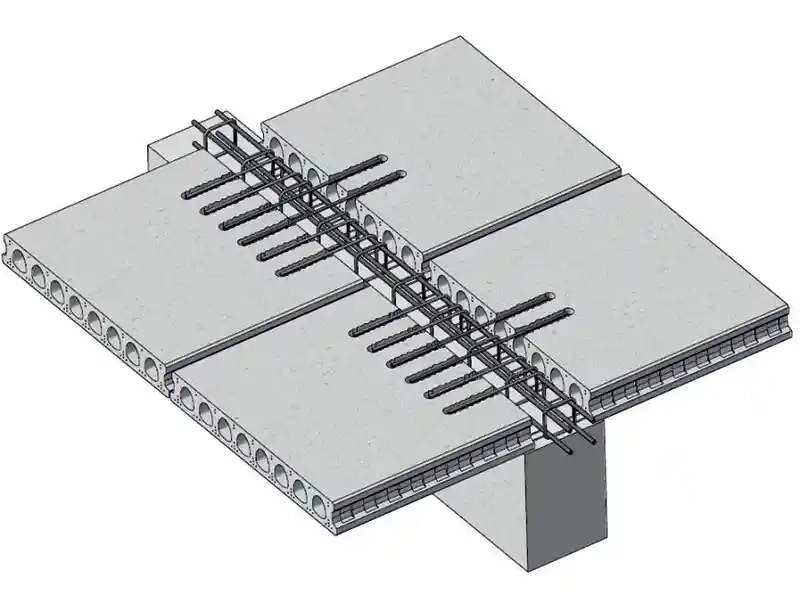 Figure 5: Upper face of the cores opened and re-filled for the connection with negatives
Figure 5: Upper face of the cores opened and re-filled for the connection with negativesWhen instead of placing the hollow core slabs simply supported on both ends, bi-articulated, the cores are opened for an installation in continuity or pinned at a beam, there is a negative moment at the supports. The value depends on the number of cores opened at the upper face of the slab and partially re-filled in-situ with concrete.
The moment and shear resistance at service and at ultimate limit states increase up to 30% with the same cross section and reinforcement strand pattern. The fire protection is also about 30% higher due to the bars placed at the openings. In seismic design of prefabricated structures with hollow core slabs, higher ‘q’ factor values are obtained due to the increased structural ductility and energy dissipation capacity.
 Figure 6: Given a HCS thickness, the number of cores affects the integration in the building system, without an unnecessary variation in weight
Figure 6: Given a HCS thickness, the number of cores affects the integration in the building system, without an unnecessary variation in weightIn modern precast, the producers of pre-stressed concrete hollow core slabs can easily adapt to the business design with fractional width slabs and a seamless choice of thicknesses. The dedicated thickness molds are rapidly depreciated with the materials saving, and they contribute to avoiding the wastage of the finished products leftovers.

Conclusion
In the same way that the development of the concrete admixtures are helping towards a gradual substitution of the cement CEM I by a less clinker containing CEM II, the water reducers and super plasticizers contribute to the emerging use of plastic concrete in the production of pre-stressed concrete hollow core slabs. This concrete property endows the HCS with superior structural performance along a leaner building workflow. In seismic prone areas, the side indenting mechanism is recognized by most of the International Building Codes as suitable to an increased monolithic building execution.
Published on:
Published in: International Concrete Construction Technology, May - June 2023
Share:
We Value Your Comment





































